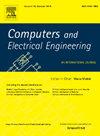基于多层次优化自适应时频分析和深度学习的电能质量扰动分类方法
IF 4.9
3区 计算机科学
Q1 COMPUTER SCIENCE, HARDWARE & ARCHITECTURE
引用次数: 0
摘要
随着分布式发电在电网中的集成度越来越高,各种高频电力电子器件对电能质量的挑战越来越大,电网的稳定性受到越来越大的影响。提出了一种基于时频分析和深度卷积神经网络(DCNN)相结合的电能质量扰动识别方法。首先,采用均值滤波包络极值法(FE)和麻雀搜索算法(SSA)对变分模态分解(VMD)参数进行优化。然后从通过VMD分解得到的模态分量中筛选和去除噪声分量。其次,对选取的多尺度模态分量,采用多分辨率s变换(Multi-Resolution S-Transform, MST)得到多尺度时频特征映射,输入改进的Inception-ResNet模型进行PQD识别;此外,引入了卷积块注意模块(CBAM)注意机制,提高了模型捕获关键信息的性能。在20 ~ 40 dB随机噪声环境下,该方法的分类准确率达到99.31%,并通过实测PQD数据验证了该方法的可靠性。本文章由计算机程序翻译,如有差异,请以英文原文为准。
A power quality disturbance classification method based on multi-level optimized adaptive time-frequency analysis and deep learning
With the increasing integration of distributed generation in the power grid and the growing power quality challenges caused by various high-frequency power electronic devices, the stability of the grid is increasingly affected. In this paper, a power quality disturbance (PQD) recognition method based on a combination of time-frequency analysis and Deep Convolutional Neural Networks (DCNN) is proposed. First, the Variational Mode Decomposition (VMD) parameters are optimized using the Mean Filter Envelope Extremum Method (FE) and the Sparrow Search Algorithm (SSA). This is followed by the screening and removal of noise components from the modal components obtained through VMD decomposition. Secondly, for the selected multi-scale modal components, the Multi-Resolution S-Transform (MST) is applied to obtain the time-frequency feature maps of multiple scales, which are then input into an improved Inception-ResNet model for PQD recognition. Additionally, the Convolutional Block Attention Module (CBAM) attention mechanism is introduced to improve the model performance in capturing key information. The proposed method obtained a classification accuracy of 99.31 % in a 20–40 dB random noise environments and is validated through measured PQD data, demonstrating its reliability.
求助全文
通过发布文献求助,成功后即可免费获取论文全文。
去求助
来源期刊

Computers & Electrical Engineering
工程技术-工程:电子与电气
CiteScore
9.20
自引率
7.00%
发文量
661
审稿时长
47 days
期刊介绍:
The impact of computers has nowhere been more revolutionary than in electrical engineering. The design, analysis, and operation of electrical and electronic systems are now dominated by computers, a transformation that has been motivated by the natural ease of interface between computers and electrical systems, and the promise of spectacular improvements in speed and efficiency.
Published since 1973, Computers & Electrical Engineering provides rapid publication of topical research into the integration of computer technology and computational techniques with electrical and electronic systems. The journal publishes papers featuring novel implementations of computers and computational techniques in areas like signal and image processing, high-performance computing, parallel processing, and communications. Special attention will be paid to papers describing innovative architectures, algorithms, and software tools.
 求助内容:
求助内容: 应助结果提醒方式:
应助结果提醒方式:


